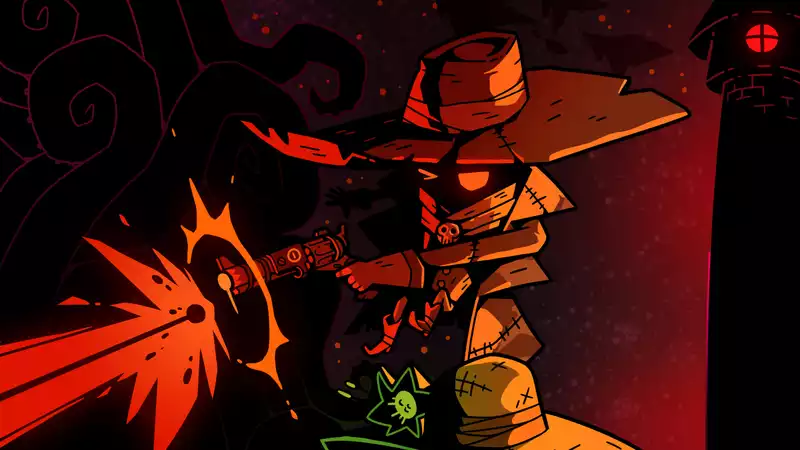Wizard with a Gun is surprisingly moody, but I suppose any wizard would be when faced with such odds. Five minutes of twin-stick shooting through a procedurally generated void compartment in search of parts to repair a magic clock before the apocalypse begins. My first experience of that apocalypse was truly harrowing. Chaos's iridescent, corrosive essence began to eat away at the levels beneath our feet, acidic meteorites rained down all around us, and eldritch tentacles and spawn fled back to the tower, harassing us relentlessly.
But some toys offer a chance to counter the rising tide of entropy. There is The First Edition, a self-learning spellbook that scans enemies for craft recipes, and The Groundlayer, a sort of machine pistol that converts raw materials into walkable tiles.
An expedition into the oblivion rift of the universe is considered successful if it ends with the recovery of a stolen artifact held by a powerful mini-boss huddled in a corner of reality. Nevertheless, defeating these bosses requires high-end heat, and I quickly found that the early spellbinding bandolier was only useful for returning to the base and harvesting resources to upgrade the forge, reloading bench, and research station.
Despite the obvious similarities to "Don't Starve," "Wizard with a Gun" felt like an expansion of the foundation laid by "Enter the Gungeon." Even when I didn't get the gear or as many resources as I had hoped, I never felt like I had wasted my time. Instead, it always felt like we were making progress, whether it was getting a powerful new bullet combo, an outfit upgrade, or enough raw materials to keep Wizard Tower from looking like the moldy basement suite we rented in college.
With only five minutes of safe time before the apocalypse, my exploration was unstructured. If I was lucky enough to find a map that pointed me in the direction of an enemy clutching an artifact within the first couple of minutes, I would usually make a round trip without a detour. If I couldn't find a map, I focused on gathering resources, hunting mobs, or trying new spell-bullet combos.
Once I got the structure of Wizard with a Gun into my head, I quickly ditched the crude pistol and peashooter carbine and focused on building around the SMG and blunderbusses, mag-dumping lightning and poison bullets from the SMG and following them up with double-barreled blasts of fire and ice was my basic combo in the early game of Wizard with a Gun. Charm bullets could be used to build a small army, and Fear bullets could be used to decimate one. Push bullets loaded in a shotgun are the perfect answer against high level enemies with powerful AOE attacks.
While the launch of Wizard with a Gun will no doubt reveal some busted meta combos, going into the combat sandbox blind and trying out strange weapon builds was where I found most of my enjoyment; Wizard didn't get a chance to try out the co-op mode, but with literally double the number of bullets with unique characteristics and traits, the sandbox will probably be taken to another level.
It is unfortunate that unlike Gungeon, the combat in Wizard with a Gun feels unpolished. Enemies have only a few ways to attack: slow-moving bullets aimed at where they were 10 seconds ago are easy to dodge, forward thrusts are often too short to reach, and forward hitboxes are oddly large. Too often, firefights with small groups of enemies commensurate with one's level feel trivial, and combat with mini-bosses is too often tedious.
The inherent awkwardness of the game incites more meaningful involvement with spell bullet crafting, but it seemed like the only way to paint over the overly simple combat system was to paint over the status effects on enemies with inflated HP.
But despite the problems with gun play, Wizard with a Gun kept me hooked, thanks to a tight game loop that constantly progressed toward bigger, better, and just plain cooler equipment and spells. It kept me playing persistently even in situations where other procedural roguelites had failed.
.

Comments